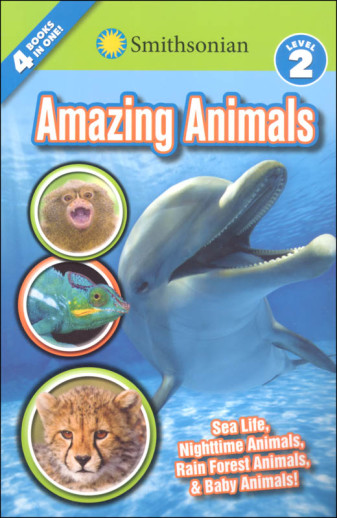We use cookies to make your experience better. To comply with the new e-Privacy directive, we need to ask for your consent to set the cookies. Learn more.
Amazing Animals (Smithsonian Reader Level 2)
Challenge yourself and engage with the amazing wildlife around the world in the newest Smithsonian reader!
This engaging nonfiction book continues children's journeys to becoming lifelong readers with new and engaging content and more challenging texts. Developed in collaboration with the Smithsonian and esteemed childhood literacy expert Dr. Adria Klein, Amazing Animals Level 2 contains four 32-page topics for engaged readers looking to learn more about the world around them—from sea life and nighttime animals to rain forest animals and baby animals! Children can also practice their reading skills and test their newfound knowledge with the included quizzes.
Now this is the way I would like to practice my reading. These leveled readers are actually six separate books (each about 30 pgs long) combined into one volume. Several things set them apart. The content is all non-fiction, interesting and in-depth information from real world categories like outer space, insects, safari animals, and world wonders. Each section (i.e. book within the book) provides detailed information, glorious pictures, and intriguing content such as the food chain segment in the predators section of the Level 4 Endless Explorations book or the section on baby reptiles in the Level 1 Early Adventures book. But that's not all! There is a glossary and quiz at the end of each of these sections along with a set of six info cards that are perforated for easy removal (36 cards per book). Books have around 200 pages, pb. ~ Janice

